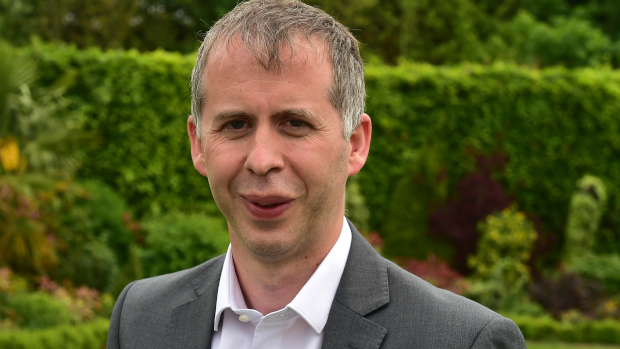
Focus on research: Donagh Berry, Vistamilk
VistaMilk is an agri-food research centre co-funded by Science Foundation Ireland and the Dept of Agriculture, Food & The Marine, and led by Teagasc from its base in Fermoy. In this interview director Prof Donagh Berry talks about how the centre has progressed since 2018 and the benefits of having a distributed research team.
When VistaMilk opened with a large staff of researchers. How has the centre changed?
We have had a good movement of people through the centre, some people are leaving, some going into academia or industry, some within Ireland, some abroad and then new recruits are coming in. Our industry partners have increased by around 20% – we originally had just shy of 40, now we have 50.
VistaMilk is set apart from the other SFI centres is a link to a state body in Teagasc. How does that relationship work?
What’s interesting is that in Teagasc – which I’m an employee of – we would be largely ignorant of the technical side of things, while the technical guys would be largely ignorant of the agricultural side of things. It’s been difficult because there’s a completely different kind of communication. The example I always use is ‘AI’. For the analytical side of the house that means ‘artificial intelligence’, but for the Teagasc people that means ‘artificial insemination’. You can imagine the conversations that go on when someone says ‘oh, we should use some AI on that’ and I’m thinking ‘oh you can’t inseminate a piece of data’, so that’s been interesting.
Has there been much learning to speak each other’s ‘languages’?
A huge amount and it’s something I would be pushing from the top is the area of interdisciplinary work. What’s the point in a having a centre if you could do the same work yourself?
We have internal conferences and monthly meetings where people present and the first question I have is ‘what’s the advantage of being part of the centre for you’? Because if you’re presenting your own work and it’s all Teagasc data and methodology then why not just do it by yourself?
A good example is predicting grass growth. If you look at the farming news there’s a prediction of what the grass is going to be next week. That’s developed using a relatively simple model by Teagasc. The analytics guys said ‘that’s a very simplistic approach, we can use a way more sophisticated approach’ and I suspect they thought they could improve on it. What we realised was their AI model was better sometimes and our rudimenatry simplistic model was better other times. Then they built another AI model to decide whether to use the artificial intelligence model or the smplistic model – and that was better than everything.
What you’ve got there is a very simple approach, you’ve got the subject matter experts who understand how grass grows and the AI guys who think of it as a broad problem and when they get a result from their model the subject matter expert will say if it’s accurate enough or not.
One comparison would be trying to guess the weight of an animal, if you’re a kilogram out trying to predict the weight of an elephant, that’s tiny, but if you’re a kilogram out trying to predict the weight of a dog, that’s huge. This is where you need a subject matter expert to decide if the result is acceptable.
A lot where agritech stuff tends to fall down is a) are you answering a problem that actually exists and b) is there a return on investment from adopting this technology – that’s a function of price, accuracy and ease of use.
Was it difficult maintaining those conversations during the pandemic?
I would argue it was the opposite seeing as most of us are introverts. We have communicated way more during Covid. A lot of us wouild shudder at the thought of having to drive up to Dublin for a meeting when we can hop on to Zoom and not be tired from driving for hours and geting stuck in traffic.
We have everything in front of us, the systems are great, and that makes us more willing to meet. What we have seen during Covid was that at first cameras were always off and then all of a sudden cameras started coming on. Now when you’re on a zoom call it’s almost always ‘cameras on’.
And did the quality of your interactions went up as well?
The quantity increased, and I think that mitigated for reduced quality. Overall I would have said our interactions were far better during Covid because we’re a virtual centre from Dublin to Cork and Waterford.
What it did impact was the on the ground research in labs. The Tyndall Institute closed and we would have eased back in Teagasc on animal experiments. The analytical guys don’t need to be in a lab or an office, so it didn’t really impact them.
When the centre opened there was a mission statement of looking at agriculture ‘from soil to society’. Is this ethos still core to VistaMilk?
We would have got a lot of publicity in the past two weeks over the discussion of the carbon emmissions targets and methane production by cows through burping. Up until VistaMilk we didn’t really know how much methane our cows were producing, it was a guess from international data and what we have shown – and the paper is being sent for peer review – is that figure was overestimated by 15-18%. That has huge implications from a societal perspective.
What gets missed in those discussion is that everybody is focussed on reducing emmissions but you achieve the same by increasing capture – the fancy word for it being ‘sequestration’. Our soil and plants are taking in a lot of this carbon dioxide and we’re asking if there are many strategies we can use to, for example, improve the soil health, which will increase sequestration. So it’s a dual approach: reduce the amount going out and increase the amount being captured. The problem is we have little to no data on how much our soil is capturing this carbon dioxide. We’re only starting to measure what ploughing and introducing permanent grasslands and different species of animal etc. do to our ability to capture carbon. We’re still going all the way from soil to society.
So we’re looking for data-driven solutions when the data isn’t there to begin with.
Peronally, it’s terribly annoying. You have huge vested interests telling different stories or giving separate calculations to fit the narrative they’re pushing. For example, there was a massive report comparing the different sectors and under ‘agriculture’ was included the costs of cutting rain forests, of creating fertiliser, shipping it etc, while for transport the cost of actually making vehicles was not included. It was one thing for one industry and different for another. Unless you’re completely ingrained in something it’s impossible to get the truth. Take that example about CO2 emmissions, in some media they were reported as 15% yet on television it was said it was 30%. Somebody just made up this number, took our findings and multiplied it by two.
I always go back to ‘show me the data’, What is the data telling us? Then you can analyse data different ways to get different answers.
Looking at methane emissions in cows, the amount a cow burps changes throughout the day. Let’s say emmissions are lowest in the morning, and cows are asleep through the night, so the less dominant cows might be assessed in the morning and the more dominant cows will be tested during the day when the methane is naturally higher. If you don’t account for that statistically, you will say the more dominant cows produce more methane – which they don’t. You end up with completely the wrong answer.
There is a lot of nuance in data collection that haven’t been accounted for yet. The problem lies in the mindset of ‘we’ll keep doing what we’re doing until someone else tells us otherwise.’ We’re working with people involved with Covid modelling and they see things completely differently to us and they’re working on that methane problem for us.






Subscribers 0
Fans 0
Followers 0
Followers